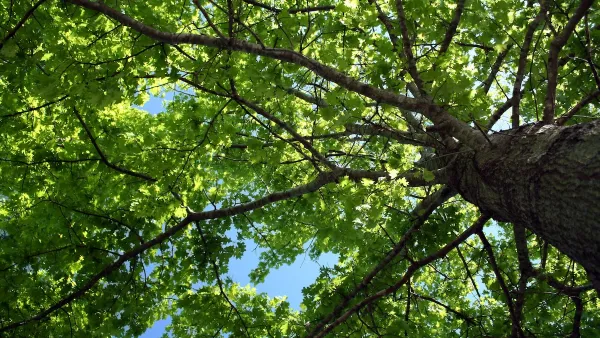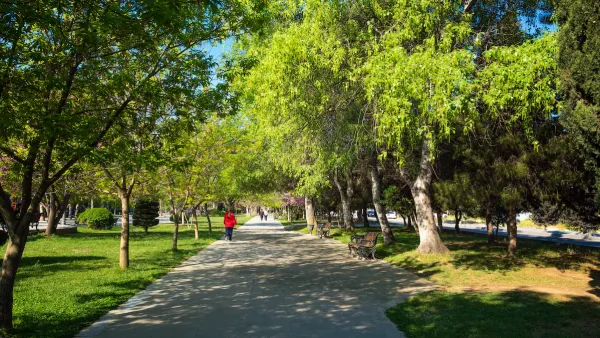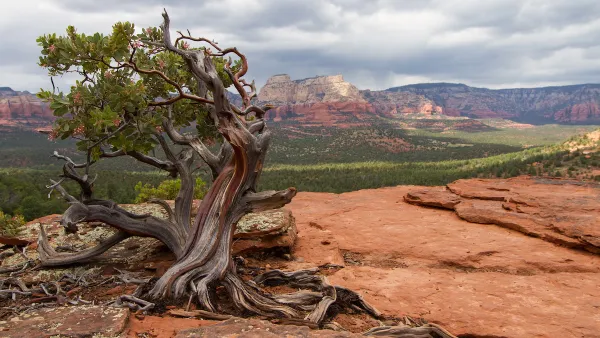Ambitious campaigns to plant trees in urban areas often don't take into account the complexities of growing and maintaining effective urban forests.

Around the world, pledges to plant more trees in cities have taken off as a perceived "feel-good cure-all for global warming. In the U.S., conservative leaders like former President Donald Trump have touted tree-planting while working to eliminate emissions regulations." But the reality of planting trees is more complicated, write Feargus O'Sullivan and Linda Poon.
"Popular campaigns to plant 1 million trees are announced to much fanfare in cities from London to Los Angeles to Phoenix, Arizona, but often fall short of their goals. Many trees don’t survive, or thrive, or deliver their promised benefits." Although "[t]here is good reason for the enthusiasm around planting trees," including carbon storage and their ability to mitigate the effects of urban heat islands and pollution, "planting a massive number of trees is not necessarily a positive investment if not enough of them survive to become mature plants." Tree planting also comes with its own carbon cost, "meaning that trees have to survive years before they offset that cost. The largest environmental gain comes when trees mature, sometimes decades after they’re planted."
The article details the lackluster performances of programs in Copenhagen and Los Angeles, where tree planting efforts ran up against a variety of unexpected challenges. According to U.S. Forest Service researcher Lara Roman,"[i]t’s not just about planting a million trees. It’s about planting and taking care of a million, and in the right places." For example, "non-native species can be the best choices in cities, where intense human activity has to an extent estranged climates from their broader surroundings."
"That’s why if cities really want to measure the success of their tree programs, they need to factor in the maturity and types of trees" by measuring tree canopy and planting diverse, resilient species.
FULL STORY: The Darker Side of Tree-Planting Pledges

National Parks Layoffs Will Cause Communities to Lose Billions
Thousands of essential park workers were laid off this week, just before the busy spring break season.

Retro-silient?: America’s First “Eco-burb,” The Woodlands Turns 50
A master-planned community north of Houston offers lessons on green infrastructure and resilient design, but falls short of its founder’s lofty affordability and walkability goals.

Delivering for America Plan Will Downgrade Mail Service in at Least 49.5 Percent of Zip Codes
Republican and Democrat lawmakers criticize the plan for its disproportionate negative impact on rural communities.

Test News Post 1
This is a summary

Test News Headline 46
Test for the image on the front page.

Balancing Bombs and Butterflies: How the National Guard Protects a Rare Species
The National Guard at Fort Indiantown Gap uses GIS technology and land management strategies to balance military training with conservation efforts, ensuring the survival of the rare eastern regal fritillary butterfly.
Urban Design for Planners 1: Software Tools
This six-course series explores essential urban design concepts using open source software and equips planners with the tools they need to participate fully in the urban design process.
Planning for Universal Design
Learn the tools for implementing Universal Design in planning regulations.
EMC Planning Group, Inc.
Planetizen
Planetizen
Mpact (formerly Rail~Volution)
Great Falls Development Authority, Inc.
HUDs Office of Policy Development and Research
NYU Wagner Graduate School of Public Service





























